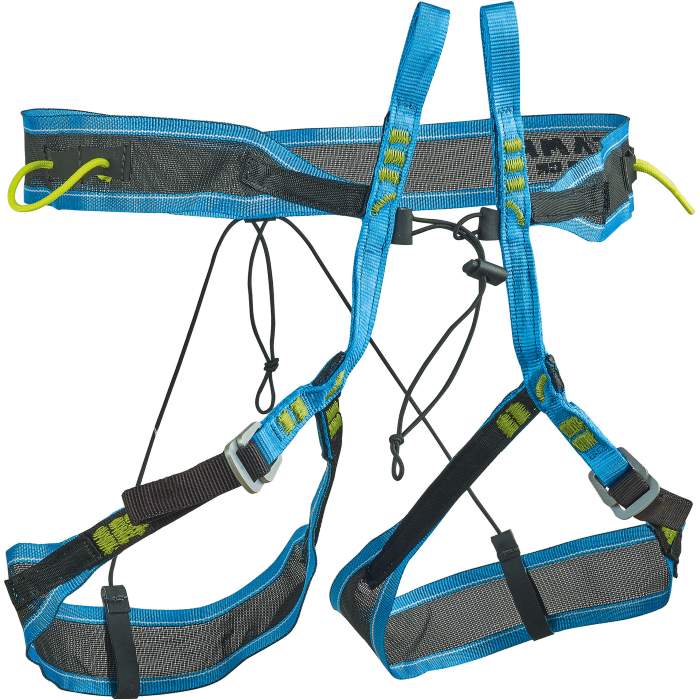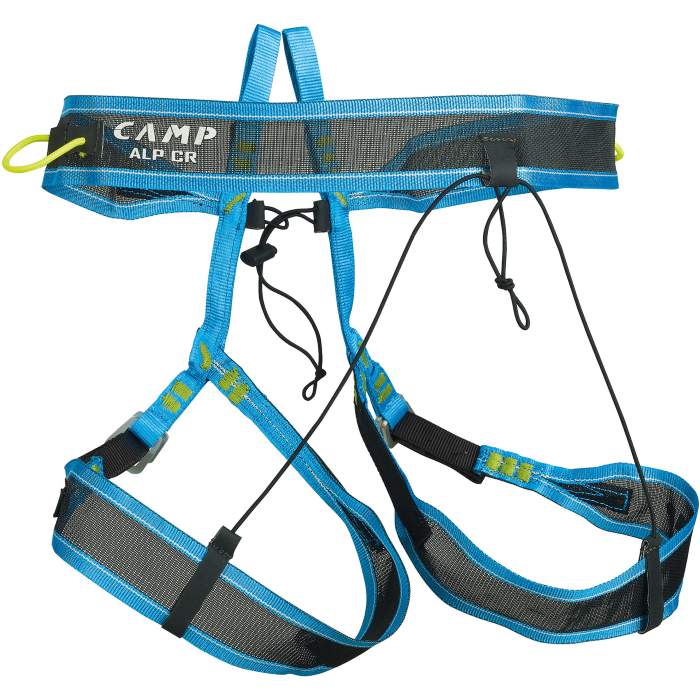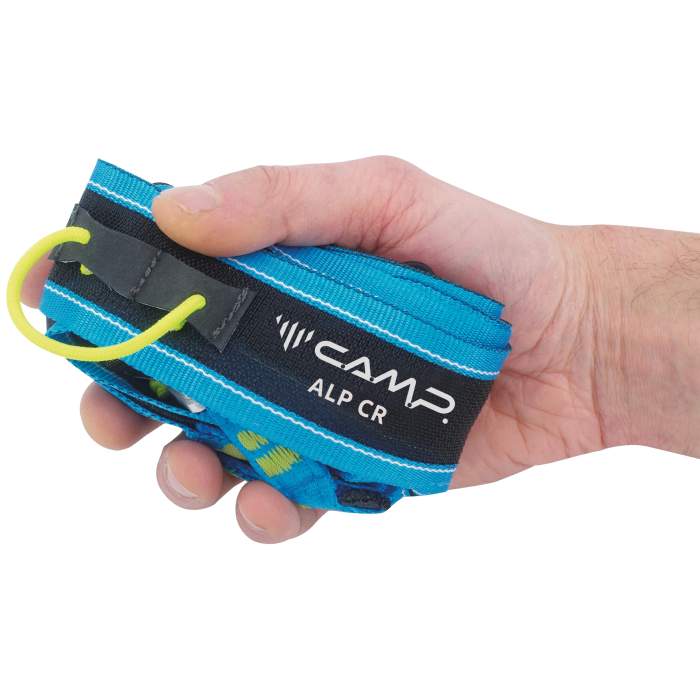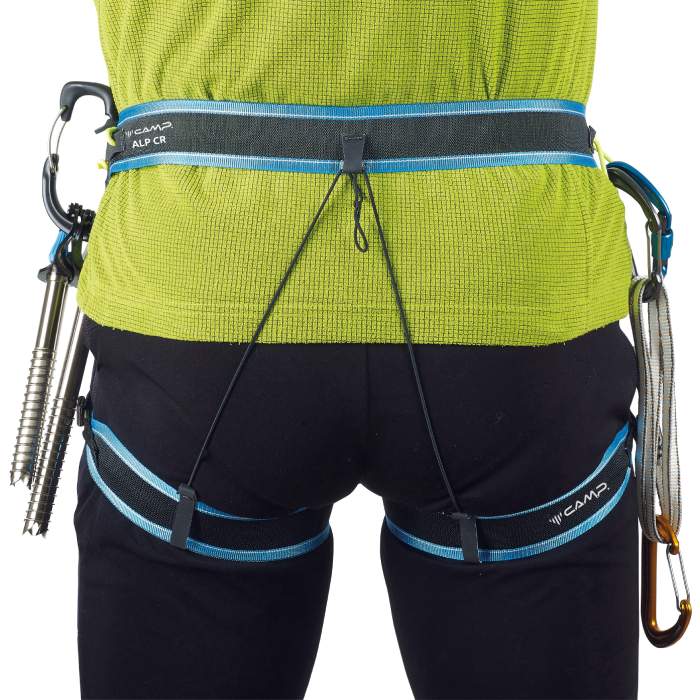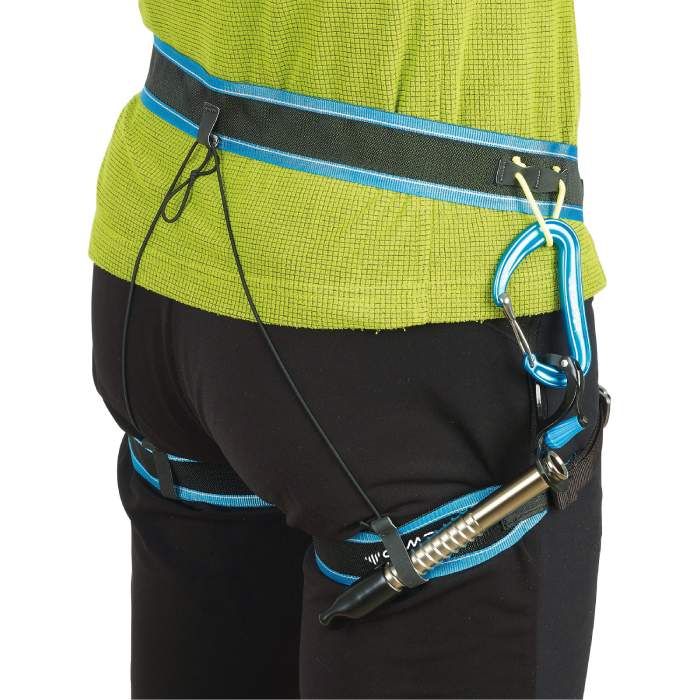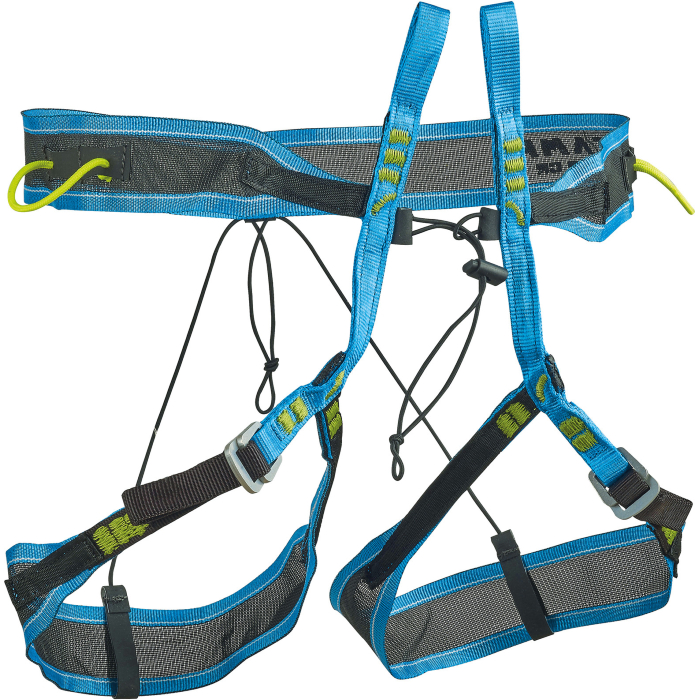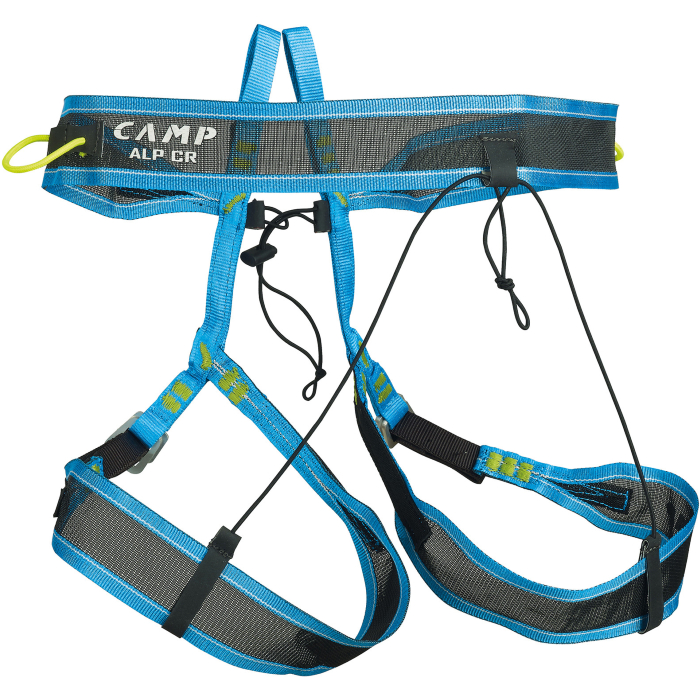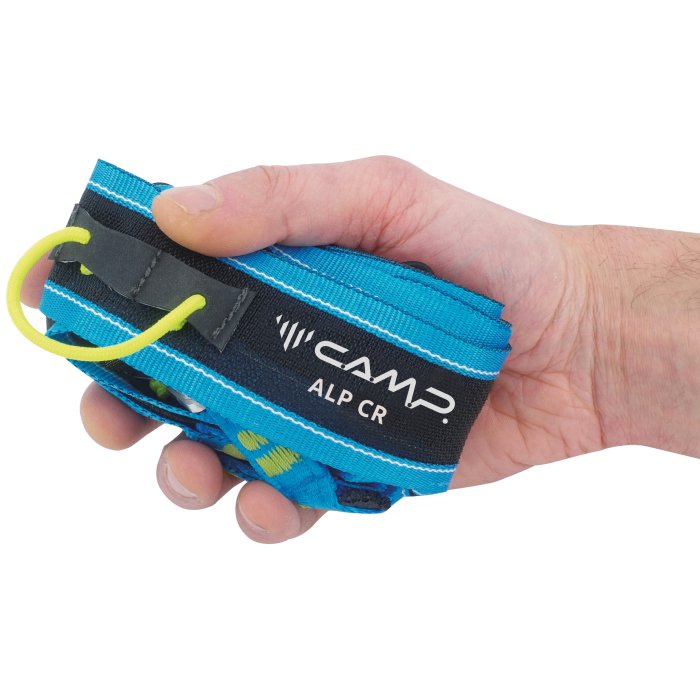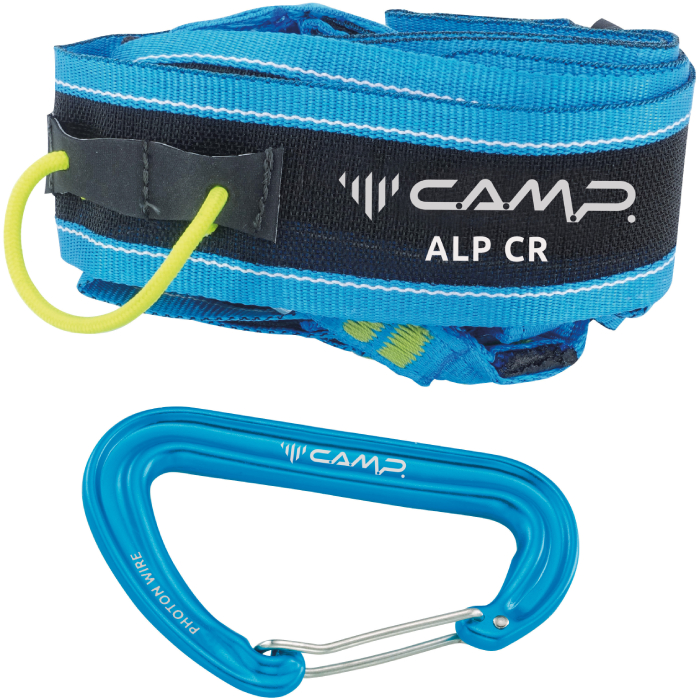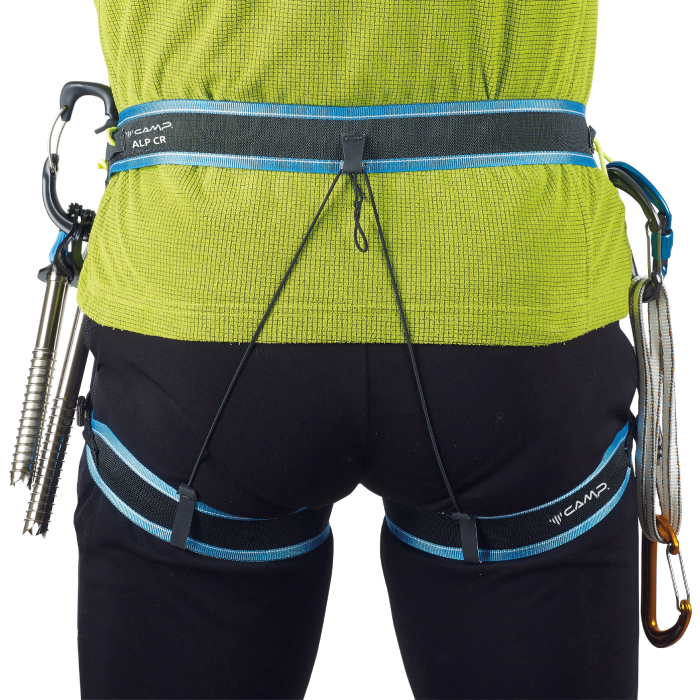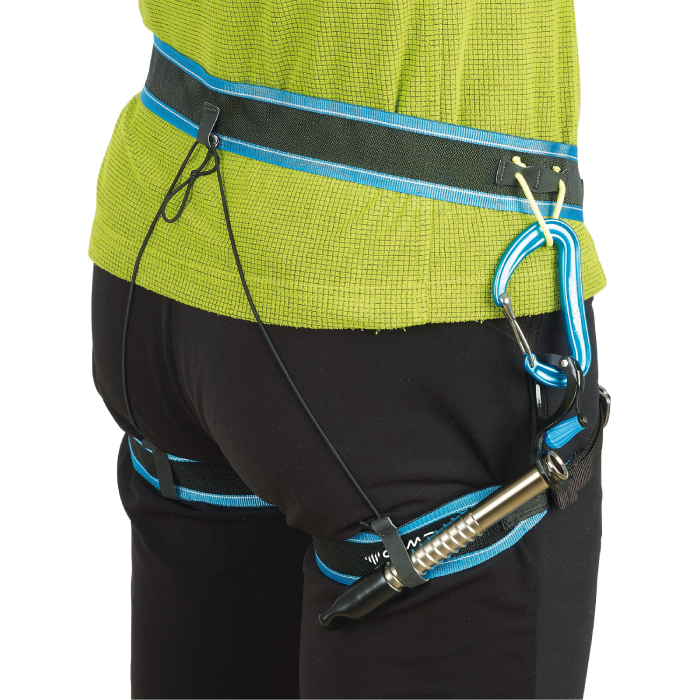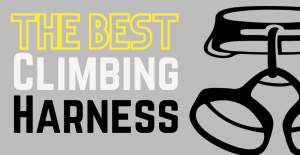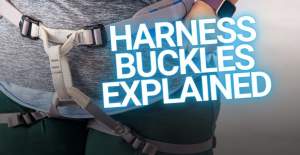Safety and Technical Information for CAMP Harnesses
Alp CR
Description
- Super light and compact harness for ski mountaineering and lightweight mountaineering
- All-mountain functionality allows the harness to be put on and taken off without removing skis or crampons
- Innovative construction uses nylon monofilament and high strength UHMW polyethylene (Ultra High Molecular Weight Polyethylene)
- Adjustable waist belt with elastic cord
- Elastic straps that connect the waist and legs are adjustable with elastic cord
- Hypalon® cord adjustments for exceptional durability
- High strength UHMW polyethylene tie-in points
- Adjustable leg loops with 7075 T6 aluminum alloy buckles
- Super breathable
The Alp CR is a hyperlight harness designed for ski mountaineering and lightweight mountaineering. The innovative construction uses super light and breathable nylon monofilament combined with exceptionally durable and abrasion-resistant high strength polyethylene. Adjustable leg loops ensure a precise fit and allow the harness to adapt to layers. The harness can be put on and taken off without removing skis or crampons. The elastic cord on the waist is detachable and the auto-locking aluminum alloy buckles on the leg loops can be unthreaded so they open completely. The elastic rise adjustment cord for the leg loops is secured by a knot to prevent the leg loops from creeping down. Two gear loops are removable using Hypalon® slots that can also accommodate Hub racking carabiners for ice screws.
Retail price
When you click a link below and then checkout online, no matter what you buy (climbing gear or not), we get a small commission that helps us keep this site up-to-date. Thanks!
Weight (g)  WeightIn grams, the weight, as stated by the manufacturer/brand. If there are differences in weight (due to multiple sizes or optional accessories) we'll list them here. The default weight is the middle-most size, often this is size M. | 94 g M : 94 g / 3.3 oz CAMP doesn't provide the weights for other sizes so we're working on gathering this info by hand, stay tuned! |
| Fit | Unisex |
| Sizes | S, M, L, XL |
Gear Loops  Number of Gear LoopsGear loops are used to hold gear (quickdraws, cams, etc) onto your harness. 4 gear loops is most common. 
0 - 1 Gear LoopsMost often on full body harnesses or guide/gym style harnesses. 2-3 Gear LoopsMostly found on lighter harnesses made for [ski] mountaineering or high-end sport climbing where weight is a high priority. 4 - 5 Gear LoopsThe standard/most common number for climbing harnesses. Perfect for sport and trad. More Than 6 Gear LoopsDesigned for long multi-pitch and big wall climbing, found on harnesses made to hold the maximum amount of gear. Worth ConsideringOccasionally, the number of gear loops will change on a harness model depending on the size. There could be 7 gear loops for the med/large but only 5 gear loops for the xsmall/small. In this case we list the highest number for the filters, and then write an explanation on the product page like, “Size S/XS can only fit 5 gear loops.” | 2 Gear loops |
Ice Clip Slots  Ice Clip SlotIce clipper slots are made to fit a carabiner that holds ice screws. These slots are generally only used by ice climbers but there is no disadvantage to having them on your harness. 
Less than 40% of harnesses will have ice clipper slots. And those harnesses will usually have 2 or 4 slots, often located next to, or between, the gear loops. | Yes |
| Belay / Tie-In | Tie-In |
| Waist Buckle Type | None |
| Leg Buckle Type | Quick Adjust |
| Drop Seat | No |
Haul Loop  Haul LoopTrad climbers often look for a haul loop as they're intended to haul a rope (second line) or pack (while you climb the chimney). 
A haul loop can also hold shoes or other accessories. Although not the intended use, it is also commonly used to hold a chalk bag. | No (0kN) |
| Certification | |
| Size Chart | S |
No reviews yet.
A pictoral representation of UIAA-105 and EN-12277 standards for harnesses.
The UIAA equipment standard provides a baseline for equipment performance in a test lab under controlled conditions on new equipment. Although these test conditions are relevant to the conditions encountered climbing, conditions encountered at the crags and the condition of the equipment are equally important. This recommendation from the UIAA member federation The British Mountaineering Council (BMC) provides vital equipment information that is NOT explicitly addressed in the standard, particularly failure modes of the equipment and recommendations for the use, inspection, maintenance, and retirement of equipment.

